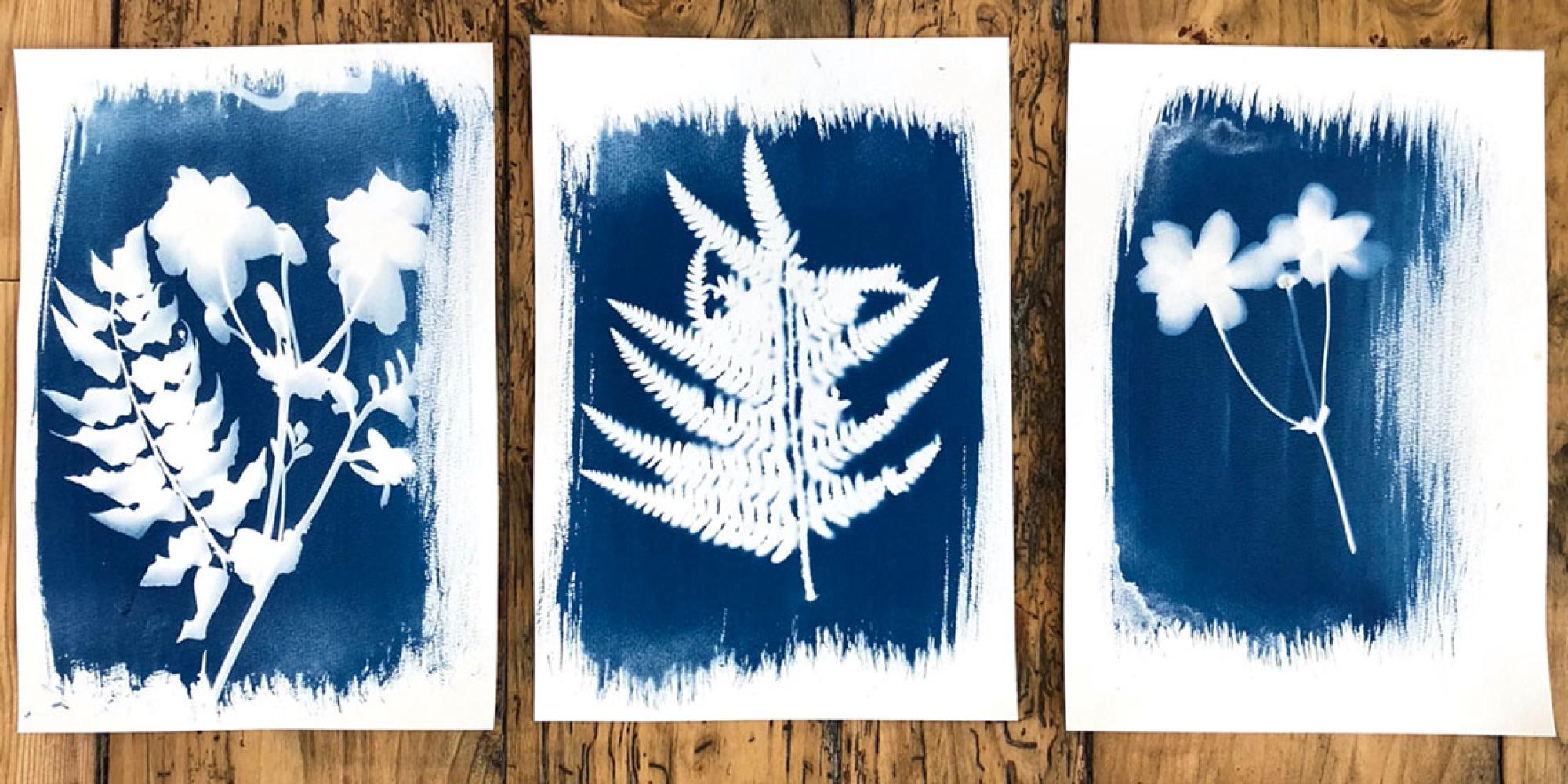A cyanotype is a photographic printing process that produces a cyan-blue print. Engineers used the process well into the 20th century as a simple and low-cost process to produce copies of drawings, referred to as blueprints. The process uses two chemicals: ferric ammonium citrate and potassium ferricyanide. The simplest kind of cyanotype print is a photogram, made by arranging objects on sensitised paper. Fresh or pressed plants are a typical subject but any solid object will create an image. A sheet of glass will press flat objects into close contact with the paper, resulting in a sharp image. Otherwise, three-dimensional objects or less than perfectly flat ones will create a more or less blurred image.

